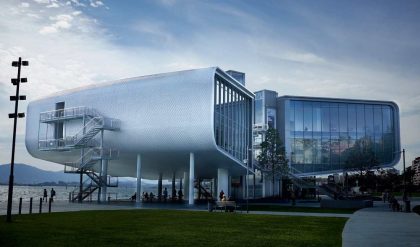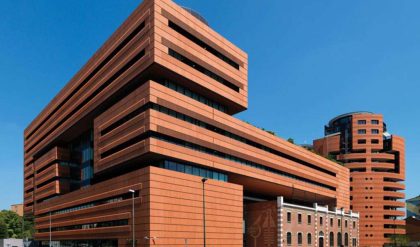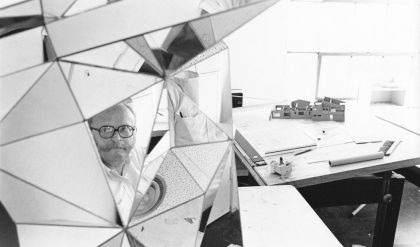The principal, though not sole question concerning architecture in relation to aesthetics is whether architecture, or at least some architecture, is art. Granted that at least some architecture is art, then issues relating to the connection between architecture as an art form and ethics can and have been raised. Likewise, architecture’s concern with ethics is highlighted when asking “Is architecture an art form?”
The question seems to be of more concern to those interested in philosophical aesthetics than to either architects or architectural theorists. Nevertheless, it is central to the philosophy of architecture. Just how the aesthetician or architectural theorist responds to the question is determined by their particular accounts of what a work of art is, or their ontology of art—if they have one. If an artwork is characterized as necessarily non-functional, then there would be reason to exclude virtually all works of architecture as objects of art.
Still, one can deny that architectural objects are objects of art while maintaining that there is or should be an aesthetic dimension to architectural objects. Architecture can be judged on aesthetic grounds in accordance with aesthetic standards of one kind or another—though arguably they either cannot be or should not be judged on aesthetic grounds alone—without thereby being regarded as art objects proper. It is pointless however to deny that some buildings are “beautiful” or that they may engender an aesthetic experience, leaving aside how such an experience is to be understood.
Some architects may regard architecture as an art form. But for those that do, the reason has less to do with a preconceived idea of the nature or ontology of art, than with understanding such an assignation as honorific in some sense. If architectural objects can be art objects, then architects must be artists, along with demonstrating whatever else—technical skill for example—that may be involved in being an architect.
From the perspective of architecture as an applied practice rather than the philosophy of architecture and aesthetics as scholarly disciplines, the question of whether architecture is an art form, and buildings objects of art, could be seen as resting on an ambivalence between art or being an artist on the one hand, and being “artful” and showing due concern for enhancing the aesthetic aspect of the built environment on the other. The O.E.D. defines “artful” as “Displaying or characterized by technical skill,” or “That [which] has practical, operative, or constructive skill; dexterous, clever.” Thus, not only can surgeons and architects be artful, but so too can cooks, car mechanics and thieves.
At times, when a level of “artfulness” displayed is of a very high or remarkable standard, it might be and sometimes is said, that the product is a work of art. Julia Child was an artist in the kitchen, much in the same way that skillful and inventive surgeons might be “artists” in the operating room, teachers in the classroom, and certainly hairdressers in the salon, and so forth. And, although there is undoubtedly an aesthetic dimension in cooking (as well as an architectural dimension if a kind of structure (form) or performative value (a function) is manifest by a certain dish), the aesthetic appears to play a particularly essential role, at least as a desideratum, in architecture.
In his essay “Is Architecture Art?” Davies (1994, 37) never questions whether buildings can be artworks. He says, “it seems obvious that many works are uncontroversial both in being buildings and works of art.” The issue, however, is not whether they are so acclaimed but whether they should be. Those who proclaim such buildings as artworks do not necessarily rely on some articulated and defended notion of art. Their acclaims appear to be largely honorific; another way of saying that such buildings are beautiful and remarkable. It doesn’t necessarily follow that everything that is beautiful is a work of art. Davies’ concern is rather with what kind of artworks they might be, with their resemblance to some kinds of artworks but not others, with the role of the designer’s intentions in determining artfulness, and with technical virtuosity, site, and culturally specific contexts underpinning their status as art objects. He asks: are buildings that are artworks “singular as are hewn sculptures, or instead admit of multiple instances (as do cast bronzes, novels, symphonies, and the like” (1994, 43)?
The claims Davies sees as uncontroversial—that architecture (buildings) may be art; that some specific buildings are artworks, and that some architects (and then only sometimes) are artists—others maintain are confused or mistaken. The view is that such claims carelessly, albeit at times on theoretical grounds, conflate the aesthetic dimension of architecture for art. The last claim is mistaken in particular for seeing architects not as “artful” practitioners, but as artists. Architects may artfully design buildings and houses that enhance the lifestyles and values of their occupants or even suggest new and alternative ones. They may design spaces that promote democratic values, sociability and neighborliness, and workplaces that are particularly well-suited to the specific needs of workers. But in so doing they are practicing architecture—applying their skills—rather than functioning as artists. But, even where aesthetic concerns are predominant, it may just be a way of talking to call their products works of art.





Comments are closed.